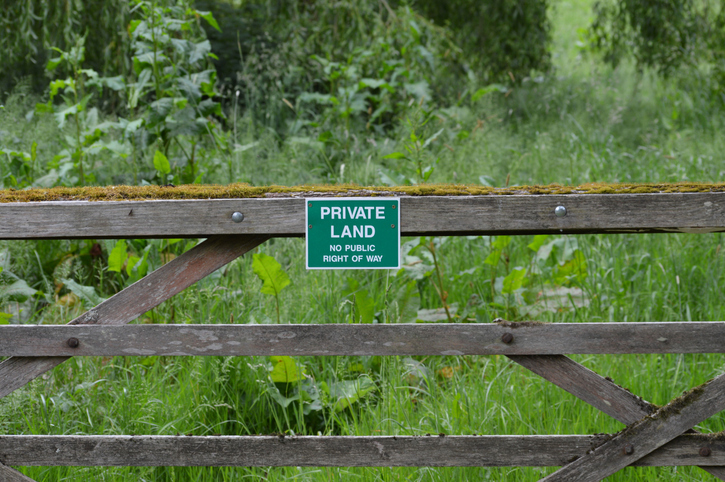Can you prevent a highway from being created on your property?
What is a public right of way?
A Public Right of Way (PROW) is a right that the public have to pass over and along a particular route. The Local Authority “Definitive Map” shows the route of all legal PROW currently in existence, and once a route is shown on the Definitive Map the Council has a legal duty to protect the PROW from being obstructed.
A PROW can be a footpath, bridleway or carriageway.
How are public right of ways created?
A PROW can be created by implied or specific dedication by the landowner. The biggest concern to landowners is a PROW created by implication.
A PROW can be legally created if it has been used by the public without force, secrecy or permission, for at least 20 years, and the owner of the land which is the subject of the right of way has not taken steps to prevent it, such as erecting notices or locking gates.
This can pose many problems for a landowner where there has been regular use by the public of an informal path, or land, for lawful sports and pastimes, which can result in those rights being formalised and recorded as a PROW.
Once a PROW has been created it will be considered dedicated as ‘highway’ and the legal presumption of ‘once a highway, always a highway’ will apply.
What can a landowner do to prevent the creation of a public right of way?
There are a number of pro-active steps that landowners can take to protect themselves against a new PROW being dedicated.
Physical Steps
A landowner may erect visible notices to inform users that the route is ‘not a public right of way’ or that ‘access is granted by permission of the landowner’. Such types of notice will be considered sufficient evidence to the Council that the landowner does not intend to create a PROW.
Such notices will need to be maintained by the landowner, but where notices are continually being torn down or defaced, a landowner can notify the Council, and this will be considered sufficient intention that the landowner does not wish to dedicate its land as a PROW. It is recommended that the notices are maintained and that evidence of the notices (such as date stamped photos) and any correspondence with the Council is kept. Other useful practical steps include fencing the land and locking gates at least once a year.
Submit a Highways Statement and Declaration
Another option for landowners is to follow the procedure set out in section 31(6) Highways Act 1980 to show that it has no intention to dedicate any new public rights of way over its land.
This involves the landowner depositing with the relevant authority a “highways statement” and map showing which PROW already exist over the land in question (if any), followed at a later date by a statutory declaration declaring that there is no intention to create any new PROW from the date when the original highways statement was submitted.
The statutory declaration will need to be submitted within 20 years of the date of the original highways statement in order to validate and complete the process. Further declarations should then be submitted every 20 years in order to continue to ‘stop the clock’. Any new claims to tracks or roads will then automatically be excluded from the possibility of any claim for their dedication as highway from the outset. It will not, however, be effective to stop a qualifying right of way which already exists from becoming a PROW.
For example, where an informal path has been used for more than 20 years, the deposit of the statement will not prevent that path from becoming dedicated as a PROW, but where a path as been used for less than 20 years the deposit of the statement will stop the clock and it will not be possible for the public to claim that such right of way is a PROW, although a claim at common law might still be possible, for example on the basis of historic document any evidence.
The statement and declaration are a prescribed form CA16, which needs to be submitted to the relevant ‘top-tier’ Local Authority, for example to the County Council rather than the District Council. If land falls within more than one appropriate Local Authority then a separate application will need to be made to each Local Authority. The application needs to be signed by every owner of the land to which the application relates, or by their authorised representative.
The map deposited with the statement and declaration needs to be very carefully marked up to show the precise route of all PROW as shown on the Definitive Map or otherwise acknowledged to exist, and must show the boundary of the relevant land in coloured edging.
A fee is payable to the Local Authority. This fee is set by each Local Authority and so will differ depend on the Local Authority to whom the deposit is made.
Once a statement and map has been submitted, then the highways statement and declaration will be added to the Local Authority’s maintained register, which can be inspected by members of the public.
What Next?
If you have any concerns about unlawful use of your land by the public or you would like to discuss any of the issues raised in this article, then please contact Hazel Eccles who will be happy to assist.

